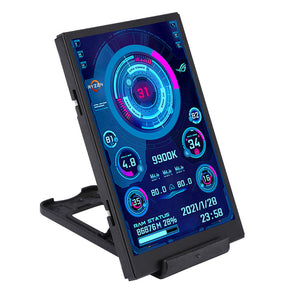Screen Computer Monitor
Understanding Computer Monitor Screens: Types, Features, and Benefits
In today’s digital world, computer monitor screens play a vital role in our daily tasks, whether for work, gaming, or leisure. Selecting the right monitor can significantly enhance your productivity and overall experience. This article delves into the various types of computer monitors, their features, and the benefits they offer.
Types of Computer Monitor Screens
LCD Monitors
LCD (Liquid Crystal Display) monitors have been a popular choice for many years due to their slim profile and low power consumption. They offer excellent image quality and are available in various sizes, making them suitable for different environments.
LED Monitors
LED (Light Emitting Diode) monitors are essentially a type of LCD monitor that uses LED backlighting. They provide brighter images, better color accuracy, and greater energy efficiency. LED monitors are ideal for professionals who require high-quality visuals.
OLED Monitors
OLED (Organic Light Emitting Diode) monitors deliver superior image quality, with vibrant colors and deep blacks. They are widely used in high-end displays, offering faster response times, making them a favorite among gamers and graphic designers.
Curved Monitors
Curved monitors provide an immersive viewing experience by wrapping the screen around your field of vision. They reduce glare and distortion, making them excellent for multitasking and gaming sessions.
Key Features to Consider
Resolution
The resolution of a monitor determines the clarity and detail of the images displayed. Common resolutions include Full HD (1920 x 1080), Quad HD (2560 x 1440), and 4K (3840 x 2160). Higher resolutions provide more pixels, resulting in sharper images.
Refresh Rate
The refresh rate, measured in Hertz (Hz), indicates how many times the monitor updates its display per second. A higher refresh rate (like 120Hz or 144Hz) is essential for smooth gaming experiences and dynamic content.
Connectivity Options
Modern monitors offer various connectivity options such as HDMI, DisplayPort, and USB-C. Ensure that your monitor has the right ports to connect seamlessly with your computer and other devices.
Benefits of Using Quality Monitors
Enhanced Productivity
A quality monitor can improve your efficiency, especially during tasks that require multitasking. Larger screens or dual-monitor setups allow for easier navigation between applications.
Better Eye Comfort
Many modern monitors come with features like anti-glare screens and blue light filters, which help reduce eye strain. This is particularly beneficial for those who spend long hours in front of a screen.
Improved Gaming Experience
For gamers, a good monitor can make all the difference. With higher refresh rates and faster response times, gamers can enjoy a more responsive and immersive gaming experience.
Conclusion
Choosing the right computer monitor screen involves understanding your specific needs and preferences. By considering the different types, crucial features, and the benefits they offer, you can invest in a monitor that enhances your computing experience. Whether you are a professional, a gamer, or simply someone who enjoys leisure activities on a computer, the right monitor is essential for optimizing your productivity and enjoyment.























